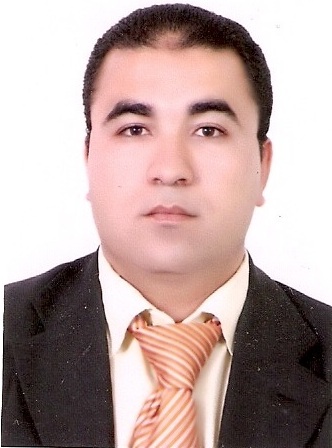Veterinary protozlogy
Course Specification
Program on which the course is given: Diploma of applied parasitology
Major or minor element of Programms:-- major
Dept offering the course: Department of Parasitology
Academic year / level: Diploma
Date of specification approval:
A- Basic information
Title: Diploma of applied parasitology
Credit Hours: Lectures: 1 hr/ week/term
Practical: 1hr/ week/term Total: 2 hr/ week/ year
B- Professional information
I- Overall aims of the Course
Upon successful completion of this course the post graduates should be able to:-
1- Identify different species of parasites (Helminthes, Arthropods and Protozoa), with good Knowledge about their Taxonomy & morphological characters.
2- Professionally understand Biology of parasites, Survival strategies of parasites, the means of spread of parasites and Behavioral ecology of different parasites.
2- Intended learning outcomes of the course (ILOs)
a- Knowledge and Understanding:
a1- Identify the fundamental concepts of Parasitology and with the technical
vocabulary used in this field.
a2- Describe morphological, biological and geographical criteria of different
parasites.
a3- Recognize the parasite-drug interaction.
a4- Explain parasite-host interaction (Immune inter-relations between parasite and the host).
b- Intellectual skills
b1- Interpret common taxa of parasites based on morphological, biologic and geographical criteria and clinical observation.
b2- Assess the differentiation between the behavior and ecology of different parasite species and stages in the environment.
b3- Specify the factors responsible for differentiating between infection and disease caused by various parasites.
b4- Carry out a protection from infection with different zoonotic parasites.
b5- Carry out a protection to their society and environment from pollution with parasites.
c- Professional and practical skills
c1- Evaluate the ecology of different parasite.
c2- Write on the biology and life cycles of parasites.
c3- Carry out a diagnosis of different parasitic infection in different hosts.
c4- Measure the basic knowledge of the parasite-drug interaction and parasite-
host interaction.
c5- Solve the problems of controlling for parasitic infection.
d- General and transferable skills
d1- Select rational control programs for parasite population.
d2- Continuous education and self learning.
d3- Update the knowledge.
d4- Protect the environment from pollution with parasites.
3- Contents
|
Practical |
Lectures |
No. of Hours |
Topic
|
|
|
20
|
20 |
40 |
Lectures: *Parasitic Protozoa *Introduction : structure and mechanism of performance of its vital functions. *Classification Practical course: - Ecology of Parasites and Parasitic infections - Geographical distribution of Parasites and parasitic Infections - Collection of parasitic samples. - common steps for preparation of permanent samples (mounting process) |
General topics
|
|
Practical |
Lectures |
|
Topic
|
Number of the course and Course Title |
|
20
|
20
|
40 |
*Parasitic Protozoa *Subphylum : Apicomplexa *Family: Eimeriidae Genus: Emeriia Genus: Isospora *Family: Cryptosporidiidae Genus: Cryptosporidium *Family: Sarcocystidae Genus: Sarcocystis Genus: Toxoplasma Genus: Neospora Genus: Besonitia *Family: Plasmodidiae Genus: Plasmodium Genus: Haemoproteus Genus: Leucocytozoon *Family: Babesiidae Genus: Babesia Genus: Babesiosoma *Family: Theileriidae Genus: Theileria *Rickettsia infecting farm animals *Subphylum:Sarcomastigophora *Family: Trypanosomatidae Genus: Trypanosoma Genus: Lieshmania *Family: Bodonidae Genus: Cryptobia Genus: Costia *Family: Hexamitidae Genus: Giardia Genus: Hexamitta *Family: Trichomonadidae Genus: Tritrichomonus Genus: Trichomonus Genus: Tetratrichomonus *Family: Monocercomonadidae Genus: Histomonus *Subphylum : Sarcodina*Family: Entamoebidae Genus : Entamoeba
*Subphylum : Ciliophora Genus: Balantidium Genus: Ichthyophthirnus Genus: Trichodina Genus: Chilodonella *Subphylum : MyxosporaGenus: Myxobolus Genus: Henneguya *Subphylum : MicrosporaGenus: Enphalitozoon - Protozoa infecting each animal species - Diagnosis of Protozoa infections - Controle of Protozoa and parasitic infections Practical course: - Preparation of permanent mounts of Protozoa (20 samples are required from each student at the end of the course) Specimens on slides
Leishmania spp., promastigote form, coccidiane evansi, coccidiane cruzi, coccidiane lewisi, trypansoma conglense, trichominus foetus
Giardia labmlia vegetative form, Giardia labmlia encysted form, Entaombia coli vegetative form, Entaombia coli encysted form, Entaombia histylotica vegetative form, Entaombia histylotica encysted form
Eimeria spp. Schizont, Eimeria spp. Macrogametocyte, Eimeria spp. Microgametocyte, Eimeria spp. Oocyst.
Sarcocystis fusiformis cyst, toxoplasma gondi cyst, toxoplasma gondi trophozoite.
Plasmodium gallinaceum pre-erythrocytic stage, Plasmodium gallinaceum schizont, Plasmodium gallinaceum male & female gametocyte, haemoproteus male & female gametocyte,
Babesia bigemina, Babesia canis, Babesia equi, Theileria parva, balntidium coli trophozoite & encysted form.
Myxobolus spp., Trichodina spp., Chilodonella ,spp., Ichthyophithirius multifilis Specimens in jars or box Sarcocystis fusiformis cyst in jar Liver of rabbit infected with coccidia Intesin of birds infected with occidian Cecae of birds infected with coccidia Bird infected with occidian Bird infected with trichomonas galinea Bird infected with histomonas milleagrides
|
Special topics
|

